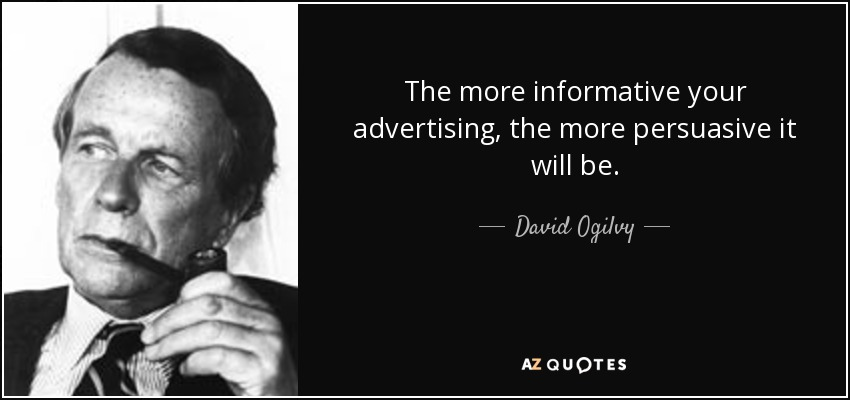Table of Contents
Introduction
Facebook ads have become essential for many businesses aiming to broaden their reach and boost sales. However, given the multitude of advertising options available, it’s crucial to evaluate whether Facebook ads align with your specific business objectives.
With such a vast audience, Facebook Ads allow businesses to target specific demographics, behaviors, and interests precisely. But with so many advertising options available, how do we know if Facebook Ads are the right fit for your business?
In this blog, we’ll take a closer look at the benefits and challenges of Facebook advertising, analyze its effectiveness, and break down whether Facebook Ads align with your specific business needs.
Are Facebook Ads a Worthwhile Investment?

Facebook Ads have emerged as a dominant force in digital marketing, providing businesses of all sizes with a cost-effective way to reach their target audience. But are they truly a worthwhile investment for your brand?
- The answer largely depends on several factors, including your business goals, target audience, and ad strategy.
- Facebook Ads offer unparalleled targeting capabilities, allowing you to reach specific demographics based on age, gender, location, interests, and even behavior.
- This precision ensures that your ads are displayed to the people most likely to engage with your brand, leading to higher conversion rates than broader marketing channels.
- Moreover, Facebook’s powerful analytics tools allow you to track your ads’ performance in real-time, enabling you to make adjustments and optimize campaigns for better results.
- This level of control, coupled with the platform’s extensive reach, makes Facebook Ads a valuable investment for many businesses seeking growth.
However, Facebook Ads aren’t a one-size-fits-all solution. The effectiveness of your campaigns will depend on the quality of your ad content, the strength of your offer, and your ability to continuously optimize based on performance data.
If executed properly, Facebook Ads can deliver a high return on investment (ROI), but businesses should be prepared to test and refine their strategies to achieve the best results.
What Constitutes a Good ROAS for Facebook Ad Campaigns?

Return on Ad Spend (ROAS) is a key metric for determining the success of your Facebook Ad campaigns. A higher ROAS indicates that your ads are performing well and delivering a solid return, while a lower ROAS suggests that your campaigns may need to be optimized.
- On average, businesses aim for a ROAS of at least 3:1, meaning that for every $1 spent on Facebook Ads, $3 in revenue is generated.
- However, the ideal ROAS can fluctuate based on factors such as product margins, competition, and the length of the customer buying cycle.
- For instance, businesses with high-margin products, such as luxury goods, might be satisfied with a ROAS of 2:1, while eCommerce businesses with lower margins often target a higher ROAS, such as 4:1 or 5:1, to cover costs and remain profitable.
- Achieving a good ROAS requires a combination of well-targeted campaigns, compelling ad creative, and strategic budget allocation.
Continuously monitoring and optimizing your ad performance can help improve your ROAS over time, ensuring that your investment in Facebook Ads pays off.
What is the Cost of Running Facebook Ads?

The cost of running Facebook Ads varies significantly depending on several factors, including your ad format, audience targeting, bidding strategy, and the competition within your industry.
Unlike traditional advertising models, Facebook Ads operate on an auction system where advertisers bid to have their ads shown to a specific audience. As a result, the cost per click (CPC) or cost per thousand impressions (CPM) can fluctuate based on demand.
- Typically, Facebook Ads can cost anywhere from a few cents to several dollars per click, with the average CPC ranging between $0.50 and $3.00, depending on the industry.
- Additionally, CPM rates (cost per 1,000 impressions) typically range between $5 and $15. Factors like the specificity of your audience, the relevance of your ad, and the time of year can all impact your ad costs.
- Facebook allows advertisers to set daily or lifetime budgets, ensuring that you never exceed your desired spend.
- Moreover, Facebook’s ad platform gives you the flexibility to control costs by choosing between different bidding strategies, such as cost-per-click (CPC), cost-per-impression (CPM), or cost-per-action (CPA).
- While Facebook Ads can be relatively affordable compared to other digital marketing channels, it’s essential to monitor your spending closely and ensure that your ads are delivering the desired results.
Five Key Benefits of Utilizing Facebook Ads for Your Brand

Facebook Ads provide a wide range of benefits that can significantly enhance your marketing efforts. Here are five key advantages of incorporating Facebook Ads into your brand’s strategy:
- Precise Audience Targeting: Facebook Ads allow you to target specific demographics, interests, behaviors, and locations. This precise targeting ensures that your ads reach the right audience, increasing the chances of conversions and lowering ad spend waste.
- Cost-Effective Advertising: Facebook Ads are highly flexible when it comes to budget. Whether you’re a small business or a large corporation, you can set a daily or lifetime budget that fits your financial capacity. The platform’s auction-based pricing also gives you control over how much you pay per click or impression.
- High Engagement Rates: With billions of active users, Facebook offers an engaged audience that interacts with content daily. Facebook Ads can foster better engagement with your brand, whether through likes, shares, or direct conversions.
- Measurable Results: Facebook’s advanced analytics tools allow you to track every aspect of your ad performance in real time. You can measure clicks, conversions, and ROAS, giving you the data needed to refine and improve your campaigns over time.
- Variety of Ad Formats: Facebook offers multiple ad formats, including image, video, carousel, and collection ads. These options give you creative flexibility, allowing you to showcase your products or services in ways that appeal most to your target audience.
Examples of Successful Facebook Ad Campaigns
Numerous brands have harnessed the power of Facebook Ads to drive impressive results. Here are a few examples of successful campaigns:

- Airbnb: Airbnb utilized Facebook Ads to promote weekend getaway destinations with video ads. By targeting users who were likely to travel, the company significantly increased bookings while strengthening its brand recognition.

- Dollar Shave Club: This subscription-based razor company built a viral campaign using humorous and engaging video ads on Facebook. Their targeted approach helped them gain millions of subscribers, disrupting the traditional razor industry.

- Nike: Nike’s Facebook campaigns often focus on empowering stories, combining video ads and influencer collaborations. The brand frequently targets sports enthusiasts, driving higher engagement and sales through motivational messaging.
These examples demonstrate how diverse strategies on Facebook Ads can be highly effective in reaching and engaging audiences while delivering substantial ROI.
Top Errors Reducing Facebook ROAS

When done correctly, Facebook Ads can deliver high returns, but certain mistakes can hinder your campaign’s performance. Here are six common errors to avoid:
- Broad Targeting: Targeting too broad of an audience can lead to wasted ad spend and low conversions. It’s essential to narrow down your audience based on interests, demographics, and behaviors relevant to your product.
- Poor Ad Creatives: Low-quality or generic ad creatives fail to capture attention. Investing in visually appealing and relevant content is crucial for engagement.
- Ignoring Split Testing: Failing to A/B test different ads means you’re missing out on valuable insights. Regularly testing various creatives, headlines, and audience segments helps improve ad performance.
- Underutilizing Custom Audiences: Not using Facebook’s custom audience feature to target past website visitors, email subscribers, or existing customers can result in missed conversion opportunities.
- Lack of Ad Frequency Management: Showing the same ad repeatedly to the same users can lead to ad fatigue. Rotating your ads and refreshing your creative ensures continued engagement.
- Neglecting Mobile Optimization: With the majority of Facebook users accessing the platform via mobile devices, ads that aren’t optimized for mobile viewing may fail to convert as expected.
By avoiding these mistakes, you can ensure your ROAS remains strong and your Facebook Ad campaigns run efficiently.
Best Practices for Optimizing Facebook Ads

To get the most out of your Facebook Ad campaigns, here are some best practices you should follow:
- Leverage Lookalike Audiences: Lookalike audiences allow you to target users similar to your existing customers. This tactic can significantly increase conversion rates and expand your reach to highly relevant prospects.
- A/B Test Regularly: Continuously run A/B tests to compare ad variations. Test different headlines, images, and call-to-actions to identify what works best for your audience.
- Focus on Video Ads: Video content is more engaging and tends to perform better than static images. Use short, captivating videos to quickly grab users’ attention and deliver your message.
- Optimize Landing Pages: Ensure that the landing pages your ads direct to are optimized for conversions. A seamless user experience with clear calls to action will help increase the chances of turning clicks into sales.
- Use Engaging Ad Copy: Your ad copy should be concise, compelling, and tailored to your audience. Highlight key benefits and include a strong call to action to encourage engagement.
By implementing these best practices, you can improve your ad performance, drive higher engagement, and maximize your ROAS.
Conclusion
Facebook Ads present a powerful marketing tool that can deliver exceptional results when approached strategically. From precise audience targeting to measurable results and a variety of creative formats, Facebook Ads offer businesses a platform to drive growth and improve brand visibility. However, achieving success requires careful planning, continuous optimization, and avoiding common mistakes that can hinder performance.
By understanding key metrics like ROAS, following best practices, and learning from successful campaigns, you can make informed decisions about whether Facebook Ads are the right investment for your business. With the right approach, Facebook Ads can become a cornerstone of your digital marketing strategy, delivering substantial returns and long-term growth for your brand.
Deepak Wadhwani has over 20 years experience in software/wireless technologies. He has worked with Fortune 500 companies including Intuit, ESRI, Qualcomm, Sprint, Verizon, Vodafone, Nortel, Microsoft and Oracle in over 60 countries. Deepak has worked on Internet marketing projects in San Diego, Los Angeles, Orange Country, Denver, Nashville, Kansas City, New York, San Francisco and Huntsville. Deepak has been a founder of technology Startups for one of the first Cityguides, yellow pages online and web based enterprise solutions. He is an internet marketing and technology expert & co-founder for a San Diego Internet marketing company.



